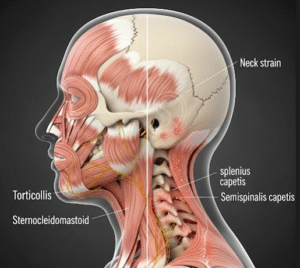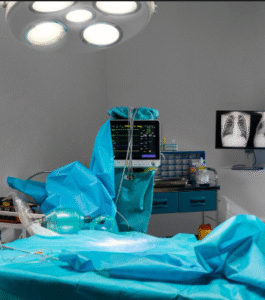What it is
The Hib/MenC vaccine is a combination vaccine designed to protect against two serious bacterial infections:
- Haemophilus influenzae type b (Hib): Can cause meningitis, pneumonia, epiglottitis, and sepsis in young children.
- Meningococcal serogroup C (MenC): A strain of Neisseria meningitidis responsible for meningitis and bloodstream infections.
By combining protection against Hib and MenC into a single vaccine, children and at-risk populations receive broader immunization with fewer injections, improving compliance and convenience.
Key points:
- Administered as an injection, usually in the upper arm or thigh.
- Recommended primarily for infants, children, and certain high-risk adults.
- Helps prevent life-threatening bacterial infections with significant morbidity and mortality.
Why it’s done
The Hib/MenC vaccine is administered to:
- Prevent severe bacterial infections such as meningitis and bloodstream infections.
- Reduce the risk of long-term complications, including brain damage, hearing loss, or limb amputation.
- Protect communities through herd immunity, especially in populations with high exposure risk.
- Comply with national immunization schedules, ensuring children are protected early in life.
Typical indications include:
- Routine infant immunization starting at 2 months of age.
- Catch-up vaccinations for children and adolescents who missed earlier doses.
- Adults with certain medical conditions (e.g., asplenia, immunodeficiency) or travelers to regions where meningococcal disease is prevalent.
Alternatives
Although the Hib/MenC combination vaccine is highly effective, there are alternative or complementary vaccines:
- Hib-only vaccines: Protect specifically against Haemophilus influenzae type b.
- Meningococcal vaccines (other serogroups): MenACWY vaccines cover multiple meningococcal strains (A, C, W, Y).
- Separate administration of Hib and MenC vaccines: May be used when combination vaccines are unavailable.
- Booster doses: For children and adolescents to maintain immunity, depending on age and risk.
Note: The combination vaccine reduces the number of injections compared with separate vaccines, improving tolerability and compliance.
Preparation
Before receiving the Hib/MenC vaccine, certain preparations ensure safety and effectiveness:
- Medical history review: Inform the healthcare provider about allergies, previous reactions to vaccines, chronic illnesses, or immunodeficiencies.
- Timing: Follow the national immunization schedule, typically at 2, 4, and 12 months for infants.
- Health status: Vaccination may be postponed if the child has a moderate or severe illness with fever.
- Avoid premedication unless advised: Routine use of painkillers or antihistamines before vaccination is generally not recommended, unless previously prescribed.
Tip: Always bring a vaccination record to the appointment to ensure proper scheduling of doses.
How it’s done
The Hib/MenC vaccine is administered as a single intramuscular injection.
Procedure steps:
- Preparation of the vaccine: The healthcare provider checks the vaccine for expiration date, proper storage, and correct dosage.
- Injection site selection: Commonly the thigh (for infants) or upper arm (for older children and adults).
- Cleaning: The area is cleaned with an antiseptic swab to reduce infection risk.
- Injection: The vaccine is administered intramuscularly using a sterile needle and syringe.
- Post-vaccination observation: Patients are typically observed for 15–30 minutes to monitor for immediate adverse reactions.
Multiple doses:
- Infants often require two or three primary doses followed by a booster at 12 months, depending on the specific vaccination schedule in Korea.
Recovery
Recovery from vaccination is generally quick and uncomplicated:
- Immediate reactions: Mild pain, redness, or swelling at the injection site.
- Systemic reactions: Low-grade fever, irritability, or fatigue may occur within 24–48 hours.
- Duration: Most side effects resolve within 1–3 days without intervention.
Care tips:
- Apply a cool compress to reduce local swelling or pain.
- Offer plenty of fluids and rest if mild fever occurs.
- Monitor for rare but serious symptoms like difficulty breathing, severe rash, or persistent vomiting.
Complications
The Hib/MenC vaccine is generally very safe, but as with all vaccines, potential side effects exist:
- Common mild side effects:
- Redness, swelling, or tenderness at the injection site.
- Low-grade fever.
- Fussiness or irritability in infants.
- Less common reactions:
- Rash, mild diarrhea, or fatigue.
- Temporary swelling of lymph nodes.
- Rare serious reactions:
- Severe allergic reaction (anaphylaxis).
- High fever or seizure.
Precautions:
- Seek immediate medical attention if severe reactions occur.
- Inform the healthcare provider of any history of allergic reactions to vaccines or vaccine components.
- Maintain accurate immunization records for proper follow-up doses.
Treatment Options in Korea
The Hib/MenC vaccine is widely available in Korea as part of the national immunization program and through private pediatric clinics.
Features of vaccination in Korea:
- Administered according to the Korean Pediatric Society schedule.
- Available in combination vaccines to reduce the number of injections.
- Offered at public health centers and private hospitals.
- Monitored for safety and efficacy by the Korean Ministry of Health and Welfare.
- Ensures early protection against serious bacterial infections in infants, children, and at-risk populations.
Summary: The Hib/MenC vaccine is a safe, effective, and essential immunization for preventing serious bacterial infections in children and certain adults. Timely vaccination protects against life-threatening complications, supports herd immunity, and is a cornerstone of preventive pediatric care in Korea.













